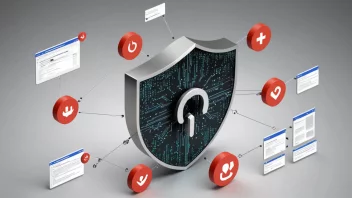Introduction
With the rise of digital wallets, securing personal and financial information has become more critical than ever. As these wallets hold sensitive data, including payment details and personal identification, it is essential to adopt robust cybersecurity practices. This article outlines the top seven cybersecurity practices to enhance the security of digital wallets and protect users from potential threats.
1. Enable Two-Factor Authentication (2FA)
Two-Factor Authentication is a security method that requires two forms of verification before granting access. This typically involves something the user knows (password) and something they have (a mobile device). Enabling 2FA on digital wallets can significantly reduce the risk of unauthorized access.
2. Use Strong, Unique Passwords
Always opt for strong and unique passwords for your digital wallet accounts. A strong password should include a combination of uppercase and lowercase letters, numbers, and special characters. Avoid using easily guessable information, such as birthdays or names. Consider using a password manager to help generate and store complex passwords.
3. Keep Software Up to Date
Regular updates to the digital wallet application and the device’s operating system are crucial for security. These updates often include patches for vulnerabilities that hackers may exploit. Enable automatic updates whenever possible to ensure you always have the latest security features.
4. Monitor Account Activity
Regularly monitoring your account activity can help detect any unauthorized transactions or changes. Most digital wallet applications provide transaction history and alerts for new activities. Set up notifications for every transaction to stay informed about any unusual activity.
5. Avoid Public Wi-Fi Networks
Using digital wallets over public Wi-Fi networks can expose you to security risks, including data interception by malicious actors. If you must use public Wi-Fi, ensure you have a reliable Virtual Private Network (VPN) to encrypt your internet connection and protect your data.
6. Be Wary of Phishing Attacks
Phishing attacks are attempts to trick users into revealing sensitive information by masquerading as trustworthy entities. Always verify the authenticity of emails, messages, or links before clicking. Look for signs of phishing, such as misspellings or suspicious URLs, and report any suspicious communications to your wallet provider.
7. Use Trusted Wallet Providers
When choosing a digital wallet, it is crucial to select trusted and reputable providers. Research the wallet's security features, user reviews, and the company's track record in handling security incidents. Opt for wallets that offer robust encryption and additional security layers.
Conclusion
As the popularity of digital wallets continues to grow, so does the importance of cybersecurity. By following these seven practices, users can significantly enhance the security of their digital wallets and protect their sensitive information. Remember that security is an ongoing process, and staying informed about the latest threats and security measures is essential for safeguarding your digital assets.






